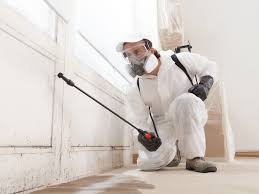Mold is more than just an unsightly nuisance—it’s a serious health hazard that can compromise indoor air quality and damage your property. Whether it’s black mold in your bathroom or fuzzy white mold in your basement, timely mold removal is essential. In this in-depth guide, we’ll explore what causes mold, the dangers it poses, and the most effective mold removal and remediation techniques to restore a clean, safe environment.
What Is Mold?
Mold is a type of fungus that grows in moist environments. It reproduces through microscopic spores that float through the air and land on damp surfaces. Indoors, mold commonly grows on walls, ceilings, carpets, insulation, and wood—especially in areas with poor ventilation or water damage.
Common Causes of Mold Growth
Understanding what causes mold can help you prevent its return after removal. Here are the most common triggers:
-
Leaky roofs or pipes
-
Flooding or water damage
-
High humidity (over 60%)
-
Condensation on windows or walls
-
Poor ventilation in bathrooms, kitchens, or basements
Health Risks of Mold Exposure
Mold exposure can cause or worsen various health issues, especially in individuals with allergies, asthma, or weakened immune systems. Common symptoms include:
-
Sneezing and coughing
-
Nasal congestion
-
Itchy eyes and skin
-
Headaches
-
Fatigue
-
Breathing difficulties
Prolonged exposure to toxic black mold (Stachybotrys chartarum) may lead to more severe respiratory issues and neurological symptoms.
Signs You Need Mold Removal
If you notice any of the following signs, it’s time to act fast:
-
Musty odors, especially in enclosed spaces
-
Discolored patches on walls or ceilings
-
Bubbling or peeling paint
-
Recent water leaks or flooding
-
Persistent allergy symptoms indoors
DIY Mold Removal vs. Professional Remediation
When You Can DIY
Small mold patches (less than 10 square feet) can usually be cleaned safely using household cleaners and precautions. Use:
-
White vinegar
-
Hydrogen peroxide
-
Baking soda and water paste
-
Commercial mold removers
When to Call the Professionals
Professional mold remediation is recommended when:
-
The mold covers a large area
-
You suspect hidden mold inside walls or HVAC systems
-
The property has suffered significant water damage
-
Occupants experience severe health symptoms
Steps for Effective Mold Removal
1. Identify the Source of Moisture
Mold won’t stop growing until you eliminate its moisture source. Fix leaky pipes, broken gutters, or high humidity problems.
2. Contain the Affected Area
Prevent mold spores from spreading by sealing off the area with plastic sheeting and tape. Turn off HVAC systems during cleanup.
3. Wear Protective Gear
Safety is crucial. Wear:
-
N95 respirator or mask
-
Non-porous gloves
-
Goggles
-
Disposable coveralls
4. Remove Moldy Materials
Porous materials like drywall, insulation, and carpets may need to be discarded. Non-porous surfaces (tiles, metals, etc.) can be cleaned.
5. Clean and Disinfect
Use appropriate cleaning agents such as:
-
Vinegar – kills most mold species and deodorizes
-
Hydrogen peroxide – effective on hard surfaces
-
Bleach – only suitable for non-porous surfaces and should never be mixed with ammonia or vinegar
Scrub thoroughly, allow to dry, and repeat as needed.
6. Dry the Area Completely
Use fans, dehumidifiers, and open windows to ensure the area is completely dry to prevent future growth.
7. Repair and Restore
Once the area is clean and dry, restore your space by replacing drywall, flooring, or insulation if needed.
Professional Mold Remediation Process
Certified mold remediation companies follow a strict protocol:
-
Inspection & Moisture Mapping
-
Containment with Negative Air Pressure
-
HEPA Vacuuming and Air Scrubbing
-
Removal of Contaminated Materials
-
Antimicrobial Treatment
-
Post-Remediation Testing
Hiring professionals ensures safe removal, especially in large infestations or when health is at risk.
Cost of Mold Removal
Mold remediation costs can vary widely based on the extent of the damage:
-
Small area (under 10 sq ft): $150–$500 (DIY or minor cleanup)
-
Moderate (10–100 sq ft): $500–$3,000
-
Severe/whole house: $3,000–$10,000+
Insurance may cover mold remediation if it’s due to a covered event (e.g., burst pipe).
Preventing Mold Growth
An ounce of prevention is worth a pound of cure. Here’s how to keep mold at bay:
-
Fix leaks promptly
-
Use exhaust fans in bathrooms and kitchens
-
Install a dehumidifier in damp areas
-
Insulate windows and pipes
-
Clean and maintain gutters regularly
-
Ensure proper drainage away from foundation
Mold and Your HVAC System
Mold spores can hide in air ducts and spread throughout your home. If your HVAC system is contaminated:
-
Turn it off immediately
-
Contact a mold remediation expert
-
Schedule professional duct cleaning
-
Consider installing UV air purifiers
Mold in Rental Properties: Who’s Responsible?
In most cases, landlords are responsible for addressing mold caused by structural issues or plumbing problems. Tenants should report mold promptly and maintain good ventilation and cleanliness.
Final Thoughts
Mold removal is essential for both health and property preservation. While small outbreaks can be handled with DIY methods, large or hidden infestations demand professional remediation. Acting quickly, removing the source of moisture, and maintaining a dry environment are your best defenses against mold.
If in doubt, always consult with a certified mold removal expert to ensure a thorough and lasting solution.
FAQs About Mold Removal
Q: How long does mold remediation take?
A: Depending on the severity, it can take anywhere from a few hours to several days.
Q: Is bleach the best cleaner for mold?
A: Bleach can kill mold on non-porous surfaces but is ineffective on porous materials where mold can root deeper.
Q: Can mold come back after remediation?
A: Yes, if the moisture source isn’t eliminated, mold can return.
Q: Does homeowners insurance cover mold?
A: Only if caused by a covered peril like a burst pipe—not by neglect or long-term leaks.











































